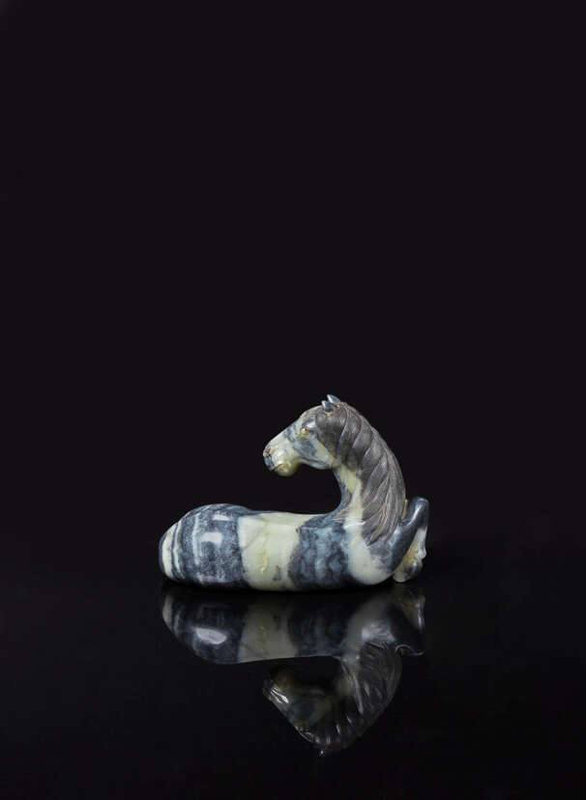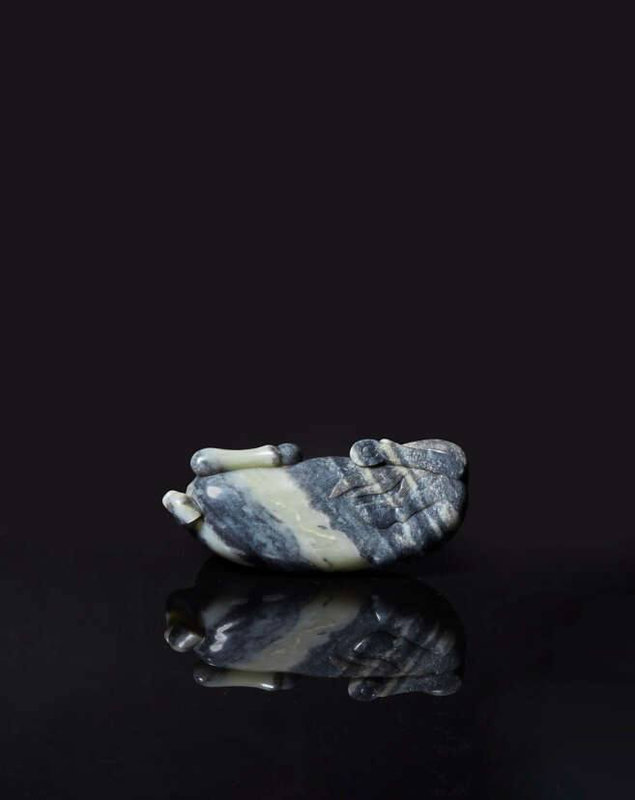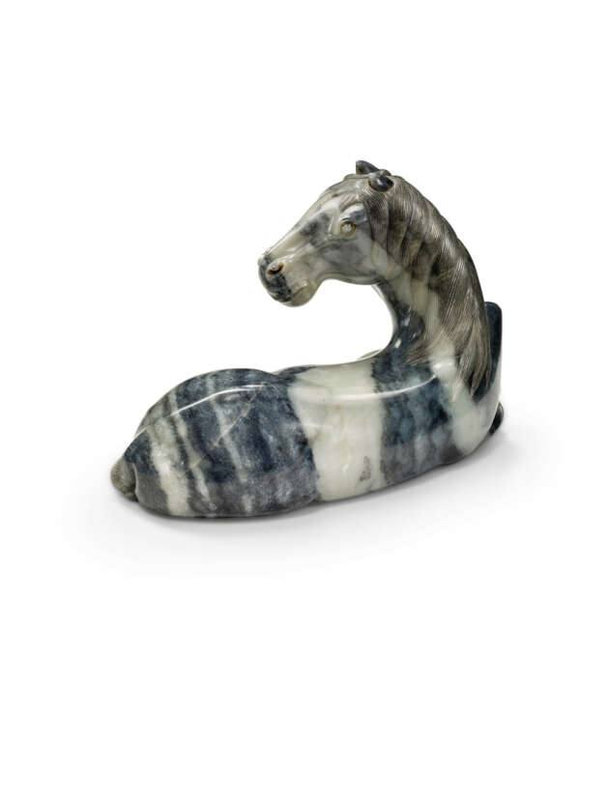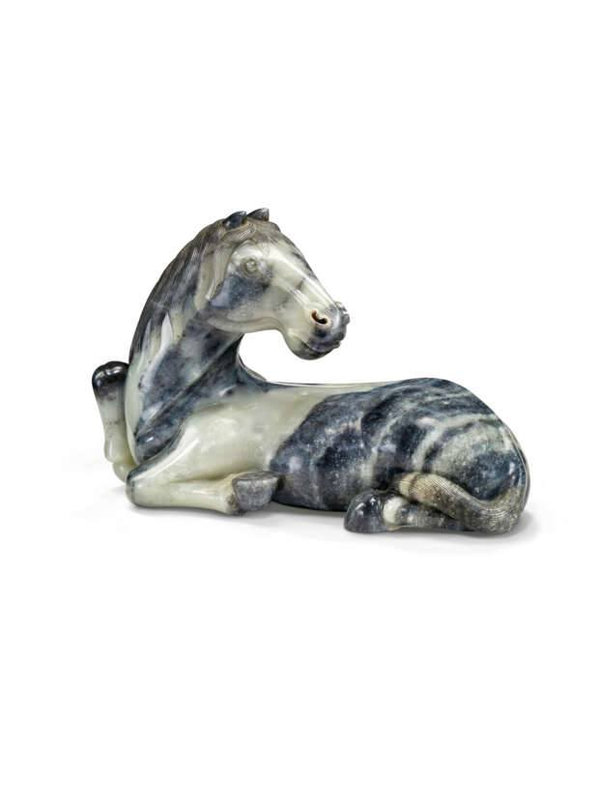A grey and celadon jade recumbent horse, Qing dynasty, 17th-18th century
Lot 44. Property from a French private collection. A grey and celadon jade recumbent horse, Qing dynasty, 17th-18th century. Longueur : 24,5 cm. Price realised EUR 75,600 (Estimate EUR 50,000 – EUR 70,000). © Christie's 2023
Il est représenté allongé sur ses quatre jambes repliées, la queue ramenée sur son flanc gauche, sa tête tournée vers l'arrière. Ses oreilles sont dressées, ses larges narines creusées et sa crinière est finement rendue par le travail de sculpture.
Provenance: Acquired at Sotheby's New York or London in the 1990s, thence by descent within the family (by repute).
Note: In the 17th and 18th centuries, the Ming and Qing imperial workshops produced an important quantity of animal carvings of a wide variety : horses, buddhist lions, rams, elephants, ducks, magpies and much more, as can be observed in the collections of the Palace Museum in Beijing, illustrated in Jadeware (III). The Complete Collection of Treasures of the Palace Museum, Hong Kong, 2006, pp. 100-118. More specifically, this horse is part of a group of large naturalistically modelled recumbent horses, depicted with their turned toward their back. See a 25.5 cm. long exemple in the collections of the Fitzwilliam Museum, Cambridge, illustrated by J.C.S. Lin in The Immortal Stone: Chinese Jades from the Neolithic Period to the Twentieth Century, Cambridge, 2009, no. 39.
J. Rawson, in Chinese Jade from the Neolithic to the Qing, London, 1995, p. 26, discusses this group and suggests that it may be dated to the transitional period between the Ming dynasty and the Qing dynasty.
Christie's. Art d'Asie, Paris, 14 june 2023

/https%3A%2F%2Fprofilepics.canalblog.com%2Fprofilepics%2F1%2F0%2F100183.jpg)
/https%3A%2F%2Fstorage.canalblog.com%2F03%2F02%2F119589%2F96711876_o.jpg)
/https%3A%2F%2Fstorage.canalblog.com%2F11%2F31%2F119589%2F94773502_o.jpg)
/https%3A%2F%2Fstorage.canalblog.com%2F20%2F83%2F119589%2F94772815_o.jpg)
/https%3A%2F%2Fstorage.canalblog.com%2F26%2F72%2F119589%2F75604929_o.jpg)
/https%3A%2F%2Fstorage.canalblog.com%2F59%2F60%2F119589%2F26458628_o.jpg)









/image%2F1371349%2F20240502%2Fob_6bf7d3_telechargement.jpg)
/image%2F1371349%2F20240502%2Fob_3ec9ac_telechargement.jpg)
/image%2F1371349%2F20240502%2Fob_0d3c8b_telechargement.jpg)
/image%2F1371349%2F20240428%2Fob_096a92_telechargement-10.jpg)